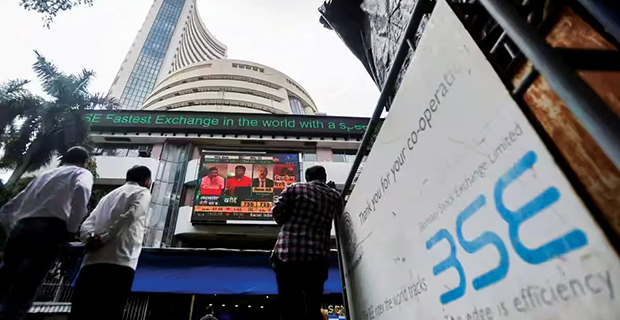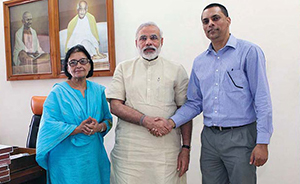RETURN OF FIIs DRIVE MARKET’S RECORD SURGE
Chennai: A combination of factors – better corporate Q4 results in FY23, return of the foreign institutional investors (FII), India’s improving macroeconomic data, being the brightest among the emerging market and small investors not wanting to be left out and coming into the market -- have together taken India’s stock markets on a record high, said experts.
The market indices – NSE’s Nifty and the Sensex of the BSE- are nearing their 52-week high points. The Nifty of the NSE on Friday opened at 18,723.30 and touched a high of 18,864.70. The 52-week high point was 18,887.60.
Similarly, the Sensex of BSE opened at 62,960.73, touched a high of 63,520.36 and closed at 62,917.63 points. The highest level was 63,583.07 points. “The domestic economic indicators continue to remain healthy and showing sustained momentum in both manufacturing and services growth along with now declining inflation numbers raising hopes of increase in consumer demand as well. This has been one of the key reasons for our markets performing relatively well since a few weeks ago. Now recently, with global macros also showing some improvement on the inflation front is helping to sustain the positive sentiments,” Roop Bhootra, CEO - Investment Services, Anand Rathi Shares and Stock Brokers told IANS.
“One of the key drivers of the Indian stock market’s upward trend is the overall positive economic outlook of the country. India’s robust economic growth, supported by government initiatives such as infrastructure development, taxation reforms and efforts to improve the ease of doing business are moving the market upwards,” said Hardick Bora, Co-Head – Equity, Union Asset Management Company Private Ltd told IANS.

Given the structural nature of these factors, India’s economic growth is expected to be one of the fastest over the five years. This has enhanced overall investor confidence, Bora added. Experts do not agree that the return of the FII to Indian markets as the sole or major factor for the markets to go up.
“We believe that even though FII activity can impact stock prices in the short term, in the medium to long term, prices tend to move in line with their intrinsic values. Moreover, FIIs often invest in markets based on their long-term growth potential and the attractiveness of the particular economy,” Bora said. Bhootra pointed out at the healthy about Rs.14,000 crore per month inflows from the domestic systematic investment plans of domestic mutual funds.
So, for how long the uptrend in the market would continue or when will the party end? “The upward movement in the Indian stock markets could continue as long as the global risk appetite remains high, interest rates do not rise majorly from here and domestic macros do not deteriorate in the face of El Nino pattern developing or other factors,” Dhiraj Relli, MD & CEO, HDFC Securities told IANS.
“Markets may start getting nervous ahead of the next round of state elections due in November/December 2023,” he added. On the other hand, Bhootra said buoyancy in the markets could continue to remain for the year as the overall economic situation is good and in an uptrend. “The only risk to the markets may be from global events and do not see anything alarming on the domestic front,” Bhootra said.
Stressing that ups and down are part of the markets and it never goes in one direction continuously Bhootra said if one looks from valuations and long-term growth perspective, India will continue to remain a long term growth story for years to come and there would be a lot of opportunities in the markets in between.
“In terms of valuations, the recent rally has discounted a part of the growth for this year, and we could say that we are trading at reasonable valuations now as compared to a quarter earlier,” Bhootra added. “Our approach to evaluating equity markets revolves around intrinsic value, as we believe that stock prices tend to align with intrinsic values over the long term. Our internal research indicates that the Nifty is presently trading at a moderate premium to its fair value. However, considering the anticipated growth in this fair value, we find the premium to be justified and see equity markets as an attractive asset class from a long-term standpoint,” Bora said.
Bora said stock prices tend to follow fair values. And growth in fair value of Nifty has in turn been driven by nominal gross domestic product (GDP) growth. Hence, we believe one of the most critical metrics to track is India’s GDP growth.
“Despite being the fifth largest, the Indian economy is likely to be the 17th fastest growing economy in the world as per International Monetary Fund (IMF). Many factors are aiding this growth potential, including growth-oriented Government initiatives,” Bora said.
Other macroeconomic variables like inflation, interest rates, foreign exchange rates, industrial activity, fiscal deficit and others have impacted stock prices, but their effect has been temporary since most of these correct themselves over time.











Comments.